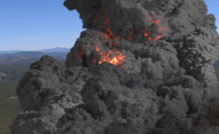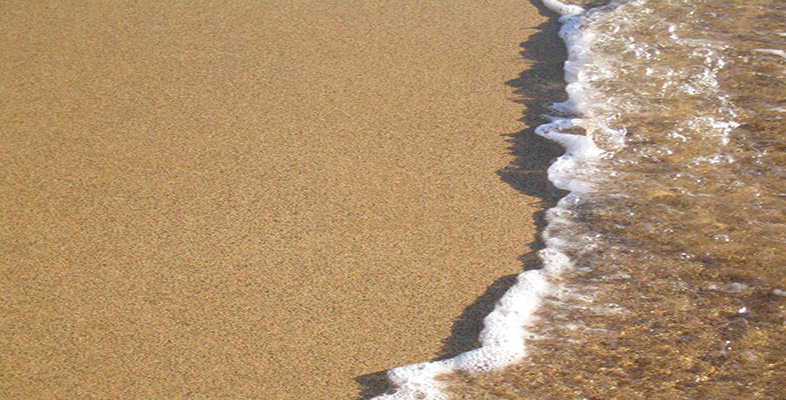Find out more about The Open University's Science courses and qualifications

Why is gold so expensive?
Gold is an unusual metal in that it predominantly exists in the Earth’s crust as the element (so-called ‘native’ gold); that is, it’s not chemically combined with other elements. Silver and copper are the only other metals naturally found in their elemental form.
Gold is a relatively rare element, making up only 0.000 000 4% of the Earth’s crust (by mass). You would need at least 250 twenty-tonne trucks full of the earth in order to recover just 20g of gold; that’s a cube of gold with approximately 1cm sides. Gold is valuable simply because it’s scarce and difficult to extract.
However, gold is by no means the scarcest or even the most expensive metal. The current price of gold (October 2002 prices) is $322 per troy ounce, compared with platinum at $566, and rhodium at $690.
 An ounce of gold
An ounce of gold
Properties of gold
Most metallic artefacts recovered by archaeologists are fashioned from either gold or silver, which are thought to be the first metals to be worked by humans. They are both relatively easy to reclaim from the rocks in which they’re found, and are easy to work. Gold is extremely unreactive and doesn’t tarnish like most other metals. Consequently, gold jewellery can survive essentially unchanged for thousands of years.
Gold is also extremely heavy, with a density of 19.4 g cm-3. The density of lead, by comparison, is only 11.4 g cm-3. Its heaviness plays a crucial part in many of the physical methods used to extract gold from its various sources.
Gold is the most malleable (something is malleable when it is easily beaten into a thin film) element there is. Just 1g of gold (the size of a grain of rice) can be beaten into a thin film covering 1 square metre.
Gold is also extremely ductile (something is ductile when it is capable of being drawn out as a wire under tension without breaking).
Pure gold is also a very soft metal. It will scratch easily, and it’s therefore unsuitable in its pure state for use as coinage or jewellery. For these purposes it’s usually alloyed with other metals such as silver, copper and zinc.
Where to find gold
Gold is often found in underground veins of quartz and, less frequently, in other minerals such as pyrite, granite and mica slate. The veins can be anything from half an inch to several feet wide. 80% of the gold that’s produced today is mined from such sources (the rest is ‘alluvial’ gold – see below). Knowing where to mine involves ‘chasing’ the gold-bearing veins on the surface, back underground. It’s been estimated that in the past 500 years, about 100, 000 tonnes of gold have been mined, but even this amount would only fill a cube with 17 m sides. The world’s biggest gold producer is South Africa, where gold mines are sunk over 3,000 metres deep into the earth.
There are also large deposits of gold above the ground. So-called ‘alluvial’ gold is found as small yellow grains and flakes, or even small nuggets, on the beds of fast-flowing rivers and streams. Natural erosion, flooding, glacial movement and weathering also play their part in freeing the gold from mountain rocks. As it’s carried downstream, the gold-bearing rock is broken up into increasingly smaller pieces, thereby releasing the gold from the quartz and mineral veins. The released gold is itself broken up into smaller and smaller fragments. The further it’s carried downstream, the smaller the gold particles become. By the time it reaches the sea, any gold is in the form of very small specks or grains.
You’re more likely to find gold deposits on the inside of bends in a river, where the water flows less quickly. As the water slows down, the heavy gold particles fall through the gravel on the riverbed, and work their way down through the soil underneath, eventually settling on the riverbed’s clay bottom. The gold can be separated from the rest of the riverbed soil and clay by panning (panning involves scooping up a sample of the sand, gravel and clay on the riverbed and swirling it with water in a shallow, wok-shaped dish), a process that relies on the extreme heaviness of gold. Any gold, being so much heavier than the rest of the minerals in the pan, will settle to the bottom, while the lighter material is washed out of the pan by the swirling motion. Any gold in your panned sample will stand out clearly as tiny, yellow flecks or small grains, a process that relies on the extreme heaviness of gold.
Gold is also often found deposited where a river widens, as well as on the downstream side of large boulders and rocks. The flow of the water slowing down allows any gold to fall to the riverbed under its own weight.
To locate gold on a riverbed, you need to take soil samples by digging down to the darker layers. The darker layer indicates the presence of heavy deposits like magnetite (iron oxide, Fe3O4, a black, magnetic iron ore). The samples are panned in order to discover whether they contain any viable gold. Because of the flow of the river, the gold is often deposited in a line along the riverbed. You can take further samples up and downstream to trace the line that the gold has followed.
Fool’s gold
Iron pyrites (iron sulfide, FeS2), or 'fool’s gold', is often mistaken for gold because it’s the same ‘metallic’, bright-yellow colour. To distinguish between fool’s gold and the real thing, smash it with a hammer. Unlike gold, which will just flatten under the hammer, iron pyrites is brittle, and will smash into small pieces. If you heat iron pyrites to a high temperature, it will give off sulfur, which has a distinctive smell. Gold on the other hand, will just melt
at 1 063 ºC.
What’s a carat then?
Most naturally occurring gold is impure. It usually contains small but significant amounts of other metals such as copper, silver, palladium and mercury. These each give the gold distinctive colours; for example, gold that contains a significant amount of copper will be tinged red, while gold containing silver will be much paler than the distinctive and unmistakable bright-yellow of pure gold.
The purity of gold is measured in carats. 100% pure gold is defined as 24 carat. 18-carat gold is therefore 18/24, or 75% pure, while 14-carat gold would be 58% pure. Only certain carat values are recognized - 24, 22, 18, 14 and 9.





Rate and Review
Rate this article
Review this article
Log into OpenLearn to leave reviews and join in the conversation.
Article reviews